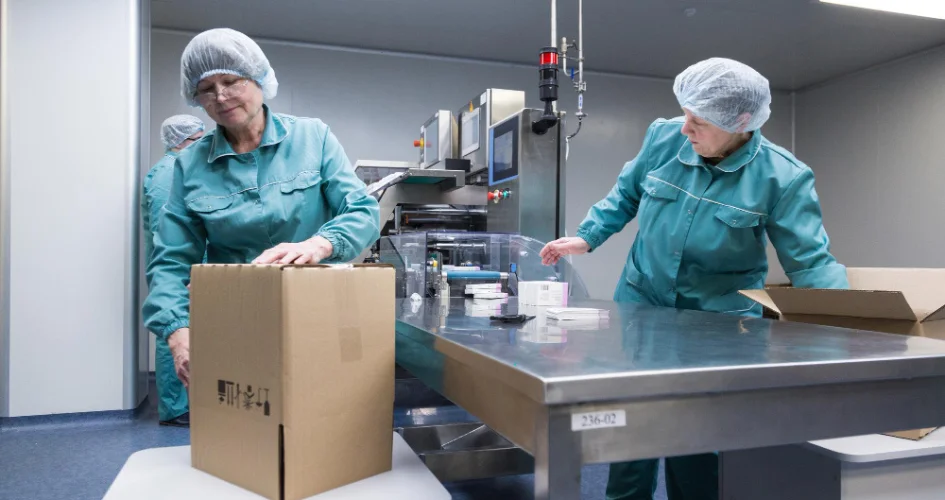The pharmaceutical industry, a bastion of innovation and scientific advancement, stands on the precipice of a new era in manufacturing. Every pill, injection, or treatment regimen undergoes a meticulous journey from conception to production, with the overarching goal of ensuring efficacy and patient well-being. However, this journey is not without its challenges, and the quest for optimization is perpetual. As we navigate the intricate landscape of drug development and production, the spotlight falls on a transformative force—advanced fluid dynamics.
Advanced fluid dynamics is a key player in the optimization orchestra. While traditional methods have served the industry well, the advent of advanced fluid dynamics techniques has opened new dimensions of understanding and control. Computational Fluid Dynamics, Multiphase Flow Modeling, and Fluid-Structure Interaction are not just scientific jargon; they represent the tools that empower pharmaceutical engineers to peer into the molecular intricacies of fluid behavior.
Applications of Advanced Fluid Dynamics in Pharmaceuticals
Advanced fluid dynamics plays a crucial role in various aspects of the pharmaceutical industry, contributing to drug formulation, equipment design, and quality control. Here are some specific applications:
A. Drug Formulation and Mixing
Homogeneity and Consistency: Advanced fluid dynamics techniques aid in optimizing mixing processes, ensuring uniform distribution of drug components in formulations. Computational Fluid Dynamics (CFD) simulations help analyze flow patterns, improving the homogeneity of the drug mixture.
Impact on Drug Stability: Understanding fluid dynamics helps identify conditions that might affect the stability of pharmaceutical compounds. CFD simulations can predict the impact of shear forces, temperature changes, and other factors on the stability of drug formulations.
B. Equipment Design and Optimization
Reactors and Vessels: Fluid dynamics simulations assist in designing efficient reactors and vessels for pharmaceutical manufacturing. Optimizing fluid flow patterns can enhance reaction kinetics and reduce unwanted by-products.
Pumps and Pipelines: Advanced fluid dynamics aids in the design and selection of pumps to ensure precise fluid delivery. CFD analysis helps optimize pipeline layouts, minimizing pressure drops and ensuring efficient transfer of materials.
C. Quality Control and Assurance
Detection of Hot Spots and Dead Zones: Fluid dynamics analysis helps identify areas with poor mixing (dead zones) and regions with excessive heat generation (hot spots) during manufacturing processes. Monitoring and addressing these issues enhance product quality and consistency.
Validation of Pharmaceutical Processes: CFD simulations assist in the validation of pharmaceutical processes by predicting fluid behavior and ensuring that conditions meet regulatory standards. Understanding fluid dynamics aids in establishing the reproducibility and reliability of manufacturing processes.
Challenges and Considerations
As we journey through the landscape of advanced fluid dynamics in pharmaceutical manufacturing, it’s essential to acknowledge the challenges and considerations that accompany the integration of cutting-edge technologies. This section explores the hurdles and nuances, offering a nuanced perspective on the adoption of advanced fluid dynamics.
Potential Obstacles
The path to embracing advanced fluid dynamics is not without its obstacles. One significant challenge lies in the complexity of implementing these techniques. Many pharmaceutical companies may encounter barriers related to the required expertise, computational resources, and the intricacies of integrating advanced simulations into existing workflows. Overcoming these hurdles demands a strategic approach, including training personnel, investing in computational infrastructure, and redefining standard operating procedures.
Regulatory Considerations and Compliance
Navigating the regulatory landscape is a critical consideration when incorporating advanced fluid dynamics into pharmaceutical processes. Regulatory bodies, keen on ensuring product safety and efficacy, may require a robust validation framework for these advanced simulations. Achieving compliance involves establishing protocols that align with regulatory standards, conducting thorough validation studies, and fostering transparent communication with regulatory authorities. The proactive integration of regulatory considerations into the implementation strategy is key to a seamless and compliant adoption of advanced fluid dynamics.
Addressing Industry-Specific Challenges
The pharmaceutical industry is dynamic, with each company facing unique challenges based on its size, specialization, and existing infrastructure. Adapting advanced fluid dynamics to fit the specific needs of an organization requires a tailored approach. It involves a careful assessment of the current manufacturing processes, identification of bottlenecks, and alignment with business goals. Addressing industry-specific challenges necessitates a collaborative effort, involving not only engineers and scientists but also stakeholders from diverse organizational functions.
Role of Pumps in Advanced Fluid Dynamics
The integration of advanced fluid dynamics techniques in pharmaceutical manufacturing brings forth a paradigm shift, redefining how various components contribute to the efficiency and precision of processes. Among these components, pumps play a central and indispensable role. Pumps, at their core, are devices designed to move fluids by mechanical action. In the context of pharmaceutical manufacturing, pumps are employed to transfer liquids within various stages of the production process. They are not mere conduits but rather dynamic elements that must synchronize seamlessly with the principles of advanced fluid dynamics.
Precision in Fluid Transfer
One of the primary contributions of pumps in advanced fluid dynamics is their ability to ensure precision in fluid transfer. In traditional pharmaceutical processes, variations in fluid flow could lead to inconsistencies in formulations. Advanced fluid dynamics simulations allow for the meticulous modeling of pump performance, enabling engineers to fine-tune parameters for optimal precision. Whether it’s the controlled release of an active pharmaceutical ingredient or the accurate mixing of components, pumps become orchestrators of fluid dynamics precision.
Adaptability to Multiphase Flow
In the multifaceted landscape of pharmaceutical manufacturing, multiphase flow is a common occurrence. Pumps must navigate the complexities of transferring substances that may exist simultaneously in liquid, gas, and solid phases. Advanced fluid dynamics techniques, such as Multiphase Flow Modeling, provide insights into the dynamic interactions within the pump system. This adaptability is crucial in ensuring the efficient transfer of formulations with diverse compositions, contributing to the homogeneity and stability of the final pharmaceutical product.
Fluid-Structure Interaction and Pump Design
Fluid-structure interaction (FSI) is a critical consideration in the design and operation of pumps in advanced fluid dynamics. Pumps experience dynamic forces as fluids move through them, and these forces can impact both the fluid and the pump structure. Through advanced simulations, engineers gain a nuanced understanding of how fluid dynamics interacts with the pump’s structural components. This insight allows for the optimization of pump design to enhance efficiency, reduce wear and tear, and extend the operational life of the equipment.
Types of Pumps Used in Pharmaceutical Processes
Various types of pumps find applications in pharmaceutical processes, each tailored to specific needs. Centrifugal pumps, diaphragm pumps, and peristaltic pumps are among the common choices.
Centrifugal Pumps: Centrifugal pumps are workhorses in the pharmaceutical realm, leveraging the principle of centrifugal force to move fluids. These pumps consist of an impeller that rotates within a casing, generating a flow of fluid through the pump.
Widely utilized for their simplicity and versatility, centrifugal pumps are suitable for transferring large volumes of liquids with moderate pressure requirements. In pharmaceutical processes, they find applications in tasks such as the transfer of liquids between tanks, blending operations, and the circulation of process fluids.
Diaphragm Pumps: Diaphragm pumps, also known as membrane pumps, offer a pulsation-free method of fluid transfer. The key component is a flexible diaphragm that moves back and forth, creating a vacuum to draw in and expel fluids. This pulsation-free operation is particularly advantageous when handling delicate substances or when precise dosing is crucial. Diaphragm pumps are valued in pharmaceutical processes for tasks such as metering and dispensing, where maintaining the integrity of the fluid is paramount.
Peristaltic Pumps: Peristaltic pumps operate on the principle of peristalsis, mimicking the rhythmic contraction and relaxation of muscles. In these pumps, a flexible tube is squeezed at intervals by rollers or shoes, creating a flow of fluid through the tube. The tubing isolates the fluid from the pump’s mechanical components, making peristaltic pumps ideal for applications that demand sterile and contamination-free fluid transfer. Pharmaceutical processes that involve the precise addition of reagents, solutions, or additives often benefit from the controlled and sterile delivery provided by peristaltic pumps.
The Transformative Impact of Pumps in Pharmaceutical Processes
The marriage of pumps and advanced fluid dynamics heralds a transformative era in pharmaceutical manufacturing. It goes beyond the mechanical act of fluid transfer; it encapsulates a holistic approach to process optimization.
Enhanced Efficiency in Drug Formulation
In drug formulation, where precision is paramount, pumps become architects of efficiency. Advanced fluid dynamics simulations enable engineers to model and optimize the intricate dance of substances within pumps, ensuring the homogeneous blending of ingredients. Whether it’s the measured introduction of active pharmaceutical ingredients or the controlled addition of excipients, pumps underpinned by advanced fluid dynamics contribute to the consistent formulation of pharmaceutical products.
Optimizing Time and Resource Utilization
Time is a precious resource in pharmaceutical manufacturing, and pumps optimized through advanced fluid dynamics play a pivotal role in time management. By fine-tuning pump parameters and understanding their dynamic interaction with fluids, processes can be streamlined for maximum efficiency. The result is not just a reduction in manufacturing time but also a judicious utilization of resources, contributing to cost-effectiveness without compromising product quality.


Videos